
 |

|
|
| |
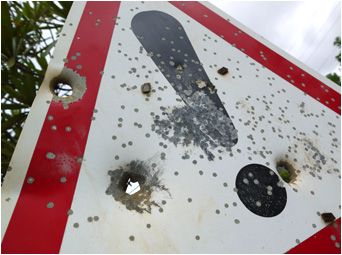
|
|
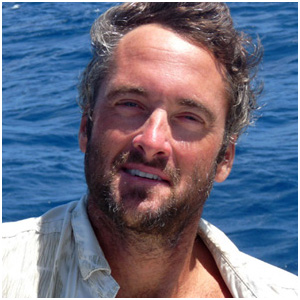 |
Day 3,257 - New Caledonia (22° 16S 166° 26E)
17:58hrs - April 30th 2016
Attention! |

When we set-off over a week ago to tour the third largest island in the South Pacific by car, locals and local media warned us about all sorts of exciting hazards: recent tiger shark attacks off the west coast, villagers firing warning shots at hikers in the east, and even a Melanesian chief who alledgedly punched a tourist on the nose for taking an unauthorized photo. Some warned us to avoid entire areas due to cultural tension, rabid mosquitoes, aggressive drunks, one friend simply told us never to drive at night - never!
Well, we were on the road for almost two weeks and drove over 1,400 km to every corner of the island - over the smooth rolling grassy countryside of the west coast, across the rough dusty red plains in the deep south. We weaved up and over craggy windswept mountain ranges and down into humid tropical valleys, through jungles of giant ferns, pines and palms.
We spent three days meandering slowly up the remote northeastern coastline past deserted beaches, towering black limestone cliffs and even kept going when the tarmac turned to gravel at the most northern point of Grande Terre, au bout du monde - the edge of the world, and I'm happy to report that we were never once shot at, punched, mauled, bitten or harassed.
In fact, almost everywhere we went locals greeted us with happy faces and friendly waves. Catherine's big smile and enthusiastic floppy wrist full arm wave, I've decided, diffuses any potential hostility before it can take hold - try being mad at someone who's waving at you like Forest Gump, impossible! To reinforce this theory, when we took a wrong turn for a picnic lunch and were greeted by a rambunctious group of drunken men, whose body language made it quite clear we were not welcome, I realized as we sped away amidst a barrage of shouting and hollering that Catherine, perhaps being too nervous, had failed to initiate the wave. Had she, and I'm confident we would have been invited to share a sandwich.
The northeast coast was a highlight for us where the road weaved around the base of a lush tropical mountain range which dropped almost vertically into a turquoise lagoon. We drove through quiet Kanak villages, met Mahi Mahi George, a local artist, and bought a hand carved Melanesian fishing spear. We stopped frequently at rickety roadside stalls to buy locally grown bananas, pamplemousse and sticky homemade pineapple cake, and when the road came to an end in Ouaime, we were waved aboard a small river barge, powered by only a 30 HP outboard engine strapped to the side, and for free, were ferried across to join the road which presumably for lack of traffic, has never been connected by a bridge.
Grande Terre has such a diverse landscape that in a single day we found ourselves driving through the English countryside, over New Zealand's south island and across Australia's outback. And while I've never been, New Caledonia's misty highlands, Catherine insists, are identical to those in Scotland.
We slept in bungalows in the central highlands relaxing to the soothing sound of a mountain stream flowing just outside our porch. We spent two days in a thatch hut right on the edge of a sandy beach, and we even had one night in a Melanesian-style Grande Case.
But we're back on Dream Time and getting ready for our next adventure, the Loyalty Islands. We've been warned about unfriendly locals there too, and it's been advised that we pay attention to traditional customs. So we'll be visiting the Melanesian chief of each village to ask permission to anchor and will offer a token gift: yards of fabric, 1,000 CFP notes, t-shirts, rice, homemade bread or muffins, and if those fail to make the right impression, we can always rely on Catherine's Forest Gump wave. |
|
 
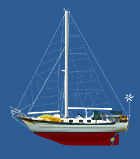
|

| |

| Apr 26th, 2016 | West Coast - Winding south back to Noumea on RT1 past country farms and green meadows, like a drive in the English countryside. |
|
|
| |

| Apr 25th, 2016 | East Coast - End of the road at River Ouaieme, lucky there's a free car ferry to get us across (powered only by a 30hp outboard engine). |
|
|
| |

| Apr 24th, 2016 | Hienghene - Jagged limestone rocks formations mark the historical village of pro-independence leader Jean-Marie Tjibaou. |
|
|
| |

| Apr 23rd, 2016 | Koulnoue Village - Towering palms catch the trades and afternoon sun outside a traditional kanak fleche faitiere (rooftop carving). |
|
|
| |

| Apr 22th, 2016 | Koulnoue Village - Central eastern coast, not a bad place to unpack and relax after a day on the road. |
|
|
| |

| Apr 21st, 2016 | Poe - Leaving the west coast and heading towards Godu, through the very center of Grande Terre to the mountainous eastern coastline. |
|
|
| |

| Apr 20th, 2016 | Turtle Bay - Le Bonhomme (telly tubby rock far right) guards the entrance of Baie des Tortues. |
|
|
| |

| Apr 19th, 2016 | Sarramea - The horse trekking highlands looking south across the valley towards La Foa. |
|
|
| |

| Apr 19th, 2016 | Farino - Rain squalls sweeping across Grande Terre's west central mountain range. |
|
|

| |
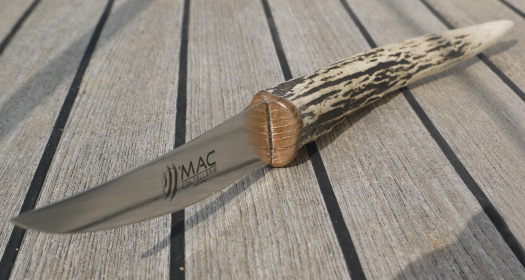
Homemade souveniers - a deer reminder of our time in New Caledonia
|
Quick Fix: 22° 16.6 S / 166° 26.4 E
April 18th, 2016 (day 3,245)
Conditions: Wind: 12/ESE Sky: Clear

Ohh Deer
In 1862 the Governor's wife, who really liked deer apparently, introduced 12 to New Cal' to enjoy watching them graze and frolic unmolested across the grassy plains. But the 12 Rusa deer did more frolicking than expected and today there are over 120,000 descendants munching their way through the island's delicate ecosystem. In an effort to reduce their numbers hunting is popular here and the government has even placed a $30 bounty on each Rusa head. As sad as that sounds, comfort, for those who need it, can be found in the knowledge that the deer are still flourishing. Great stacks of antlers, however, can be found from those less fortunate. One antler, at least, will not be going to waste and has given new life to our old scuba and fish knives - a tribute to the resilient Rusa. |
|
|

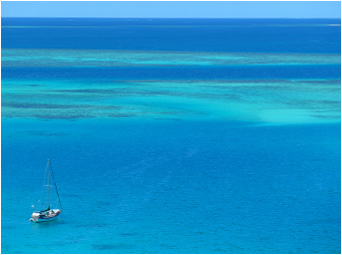
|
|
 |
Day 3,242 - New Caledonia (22° 16S 166° 26E)
18:08hrs - April 15th 2016
New Territory |

The tradewinds are now cool rather than clammy, ocean temperatures are dropping along with the humidity, and deck showers are refreshing enough to raise a few goose bumps - cyclone season is coming to an end and a brand new cruising season is on the horizon!
We've been here for eight months and visited a total of 35 anchorages around New Caledonia's southern extremities. From Port de Bouquet along the eastern coast, Ile des Pins in the far south, Ile Tenia up the west coast, and a couple of dozen idyllic islands, reefs, bays and moorings in between. We've logged over 750 nautical miles, and it's been some of the most carefree and convenient cruising we've ever experienced.
During hurricane season we chose to remain close to our cyclone lines in Port Moselle, and in doing so feel as familiar now to New Caledonia's southern lagoon and coastline as we do with the Long Island Sound back in New York. We know the best kite surfing, spearfishing, scuba diving, beach fire, turtle spotting, reef exploring, kayak paddling, trail hiking, coconut scavenging sites within a forty mile radius of the capital.
We've discovered that New Caledonia's southern lagoon offers absolutely every variety of anchorage that a cruiser could possibly wish to find. From translucent turquoise shallows over sandy plateaus surrounded by reef and coral. Dozens of perfectly formed uninhabited islands in every stage of development - from newborn sand bars to solid miniature volcanic peaks that offer panoramic views of the lagoon. We've explored Grande Terre's southern coastline, over 200 nautical miles of natural harbors, coves, headlands and inlets. We've anchored in bays framed by sweeping black volcanic sandy shores. Ventured into the deep waters of Baie de Prony and followed the meandering river upstream to a hurricane hole so calm that Dream Time was connected to a perfect reflection of herself.
We've shared these anchorages with whales, turtles, sharks, sea snakes, reef fish of all size, shape and color imaginable, and even a dugong. When we've felt energetic we relocated to Ilot Maitre (kite surfing), Ilot Mato (spearfishing), or Baie du Carenage (hiking and soaking in a natural thermal pool); When we're feeling social we drop the hook in Baie de L'Orphelinat or Baie des Citrons, anchorages right in the capital of Noumea and walking distance to shops, bars and restaurants; And when we're feeling lazy we simply grab one of the hundreds of free moorings scattered around the lagoon's UNESCO marine reserve and let the day decide our distraction.
In only two weeks cyclone season will officially be over and we're ready to venture into new territory. New Caledonia is the third largest island in the Pacific (after Papua New Guinea and New Zealand) and as it's not a volcanic island, but rather part of a submerged continent which rifted north away from New Zealand and Australia about 80 million years ago, Grande Terre is unlike any other in the South Pacific. Craggy mountain ranges give way to dusty red plains, ancient kauri forests border tropical jungles, and Melanesian villages, cattle ranches, rodeos and nickel mines will have us exploring every stretch of road, both sealed and gravel, and I suspect reaching the limit of our rental car's daily mileage allowance.
After the roadtrip we'll be stocking-up on supplies and heading 'offshore' to the Loyalty's - a chain of islands and two atolls similar to our most favorite anchorages in the Tuamotus. The Loyalty Islands lay off New Caledonia's eastern coastline about 100 nautical miles from Noumea. Locals say we'll have the atolls mostly to ourselves, and if they're only half as good as what we've seen so far, we're in for a real treat. |

| |
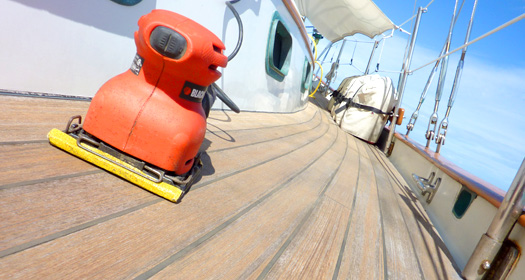
|
Quick Fix: 22° 20.0 S / 166° 26.3 E
April 6th, 2016 (day 3,233)
Conditions: Wind: 25 SE Sky: Clear.

Smooth Sailing
It took 6 hours of free-diving and another hour with a dive tank to scrape a month's worth of mutant, Port Moselle barnacles and sea growth from Dream Time's hull. The marina, surrounded by runoff, a fish market, and home to hundreds of sailboats whose live aboard occupants, we were disturbingly informed, seldom use the public facilities, is a giant petri dish for the dark, slimy and unsavory underworld of Noumea. Shortly after the last barnacle dropped and as if to verify a job well done, three remora (suckerfish) happily attached themselves to our hull. But with little to show for all our effort topside we also cleaned the hull with vinegar to remove 6 years of salt scaling and spent 2 more days sanding the decks. The work is done - we're ready for a new cruising season. |
|
|

| |
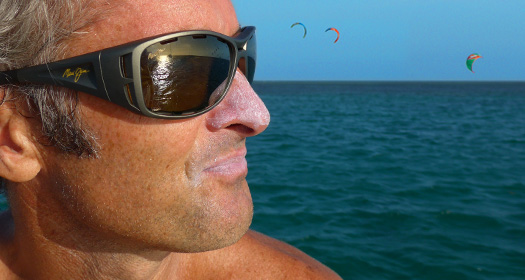
Time to take our new Waterman sunnies out for a test flight - mahalo Maui Jim!
|
Quick Fix: 22° 20.0 S / 166° 26.3 E
April 1st, 2016 (day 3,228)
Conditions: Wind: 20 SE Sky: Clear.

Fun Time
We're free! Our engine room has been reassembled with a shiny rebuilt transmission, new oil cooler and starter motor, so we tossed the dock lines and for the first time in 6 weeks stretched our sails and headed out into the world's largest lagoon for a little fun time. We haven't gone far, a whopping 3 miles to a sandy tropical island which, with 20 knots of warm tradewinds, is a favorite amongst locals for kite surfing. There's still work to be done, after 6 weeks in the marina our hull under the waterline is a lush aquatic jungle of sea growth, so much that under power we can barely manage 2 knots of boat speed. But right now I don't care. The sun is shining, the wind is blowing and I've got a kite to fly. The barnacles can wait. |
|
|

|
| | |





